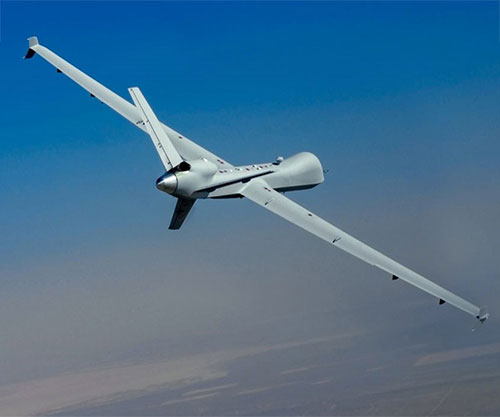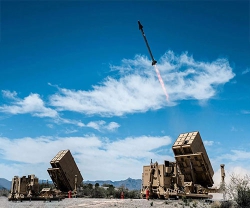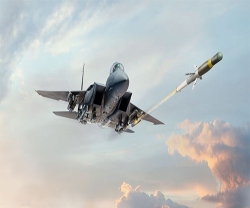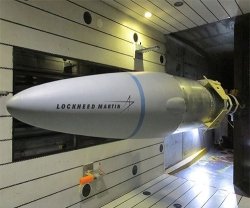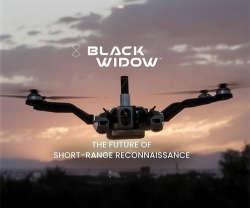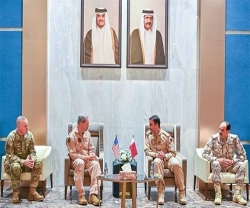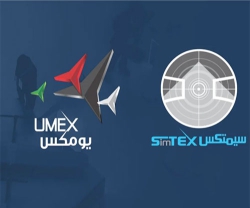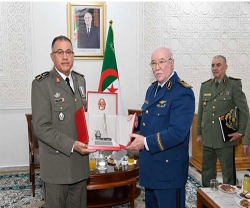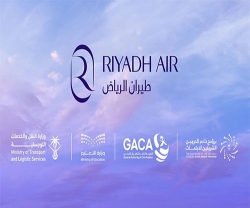On December 22, 2022, General Atomics Aeronautical Systems, Inc. (GA-ASI) and the Air National Guard (ANG), with joint support from the U.S. Marine Corps (USMC) and U.S. Air Force (USAF), flight tested an MQ-9A remotely piloted aircraft (RPA) equipped with a Low Earth Orbit (LEO) satellite communications (SATCOM) Command and Control system.
This groundbreaking capability provides global coverage and connectivity that will enable pole-to-pole operations for GA-ASI’s family of RPA – including models such as the MQ-9B SkyGuardian®/SeaGuardian®, MQ-9A Reaper, and Gray Eagle 25M.
“This is truly game-changing for our platforms,” said GA-ASI President David R. Alexander. “Using LEO SATCOM not only keeps GA-ASI aircraft connected from the North Pole to the South Pole to allow operations in the most austere environments, but it will also provide resilient connectivity that allows operators to pass much more data to and from the aircraft.”
Early testing indicates LEO SATCOM significantly reduces latency and can be used in all phases of flight. For customers across the MQ-9 family of systems, LEO SATCOM should decrease operational costs, and the smaller hardware footprint will ultimately increase flexibility and reduce future payload integration costs.
The MQ-9A flight test was based out of GA-ASI’s Gray Butte Flight Operations Facility near Palmdale, Calif., and followed several weeks of ground testing.
GA-ASI also announced it will manufacture and perform demonstration flights of the Air Force Research Laboratory’s (AFRL) unmanned Off-Board Sensing Station (OBSS) aircraft. Following a 12-month base period that culminated in a critical design review (CDR), AFRL exercised a build and flight test option.
GA-ASI’s innovative Gambit Series aircraft will validate the “genus/species” concept first developed by AFRL as part of the Low-Cost Attritable Aircraft Platform Sharing (LCAAPS) program focused on building several aircraft variants from a common core chassis. LCAAPS is a major air vehicle effort under AFRL’s Autonomous Collaborative Enabling Technologies (ACET) portfolio, which is focused on developing technologies for Autonomous Collaborative Platforms (ACP).
“Throughout our 30-year history, GA-ASI has pioneered the advancement of unmanned aircraft systems that support our warfighters,” said GA-ASI President David R. Alexander. “AFRL is moving forward with GA-ASI because we have the right background and experience to develop the OBSS aircraft at scale and on time, and we look forward to working with them to deliver another game-changing UAS.”
General Atomics-Aeronautical Systems, Inc. (GA-ASI), an affiliate of General Atomics, is a leading designer and manufacturer of proven, reliable remotely piloted aircraft (RPA) systems, radars, and electro-optic and related mission systems, including the Predator® RPA series and the Lynx® Multi-mode Radar.
With more than seven million flight hours, GA-ASI provides long-endurance, mission-capable aircraft with integrated sensor and data link systems required to deliver persistent flight that enables situational awareness and rapid strike. The company also produces a variety of ground control stations and sensor control/image analysis software, offers pilot training and support services, and develops meta-material antennas.

